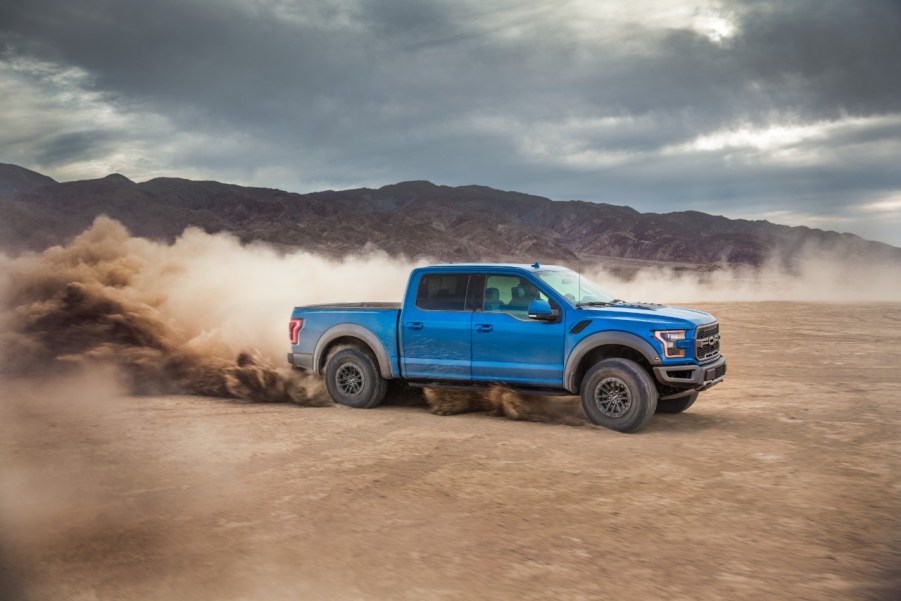
You Might Be Using Your 4WD System Wrong
Americans love their trucks and SUVs, and owning one usually means having a car with four-wheel drive. This trend has spread to smaller cars too. While having four-wheel drive is one thing, learning how and when to use it is another. Here’s what you need to know.
What you’re doing wrong with 4WD
The first and most common thing people do wrong is simply not using four-wheel drive enough. As Popular Mechanics explains, there is one big benefit to having four-wheel drive active all the time and one minor drawback.
The big benefit is traction. Four-wheel drive, when activated, will give your vehicle more grip. This is a big deal, as rain in particular is very dangerous for any other vehicle. In fact, a Consumer Reports study showed that the braking distance for a tire on a regular road versus a wet road was massive.
A longer braking distance means that your car will come to a stop later than normal. In some cases, this isn’t a big deal, but if you’re trying to stop your car to avoid a crash, then a wet road may mean that you’ll still crash. This is why having traction from four-wheel drive being engaged all the time can be a big benefit.
That said, four-wheel drive will reduce the fuel efficiency of your car by a little bit. It’ll depend on the make and model, but by and large, the difference is about one or two miles per gallon overall. If fuel efficiency is something you care about, then this may matter to you. But for most people, this isn’t a huge concern.
What is four-wheel drive high?

Yes, there are other four-wheel drive settings to consider, but many people utilize the “four-wheel drive high” setting incorrectly. Other four-wheel drive settings aren’t used too often and, as Popular Mechanics puts it, you should probably look at your owner’s manual as different cars will have different settings.
Regardless, four-wheel drive high is a common setting. But it’s not very useful for most cars with four-wheel drive since the auto setting does it better. In any case, if your car doesn’t have four-wheel drive auto, then four-wheel drive high is what Popular Mechanics recommends for snowy or dirt roads.
This is mostly because of how four-wheel drive high works, as it does its job best on straight and paved roads. On actual off-road terrain that lacks roads four-wheel drive high isn’t too useful.
What is four-wheel drive low?
Four-wheel drive low, unlike four-wheel drive high, can be a very useful setting. Like Popular Mechanics said, four-wheel drive low is great at low speeds and in situations where you’re not traveling in a straight line. Those situations, more often than not, involve off-roading.
If you drive a sedan or a car that otherwise won’t be off-roading, then four-wheel drive low is not very useful. But, for truck and SUV owners who take their vehicles outdoors, four-wheel drive low is the setting you’ll want to use to navigate tough trails. There are other settings to use on top of four-wheel drive low, but it all depends on the situation and the make of your car.



